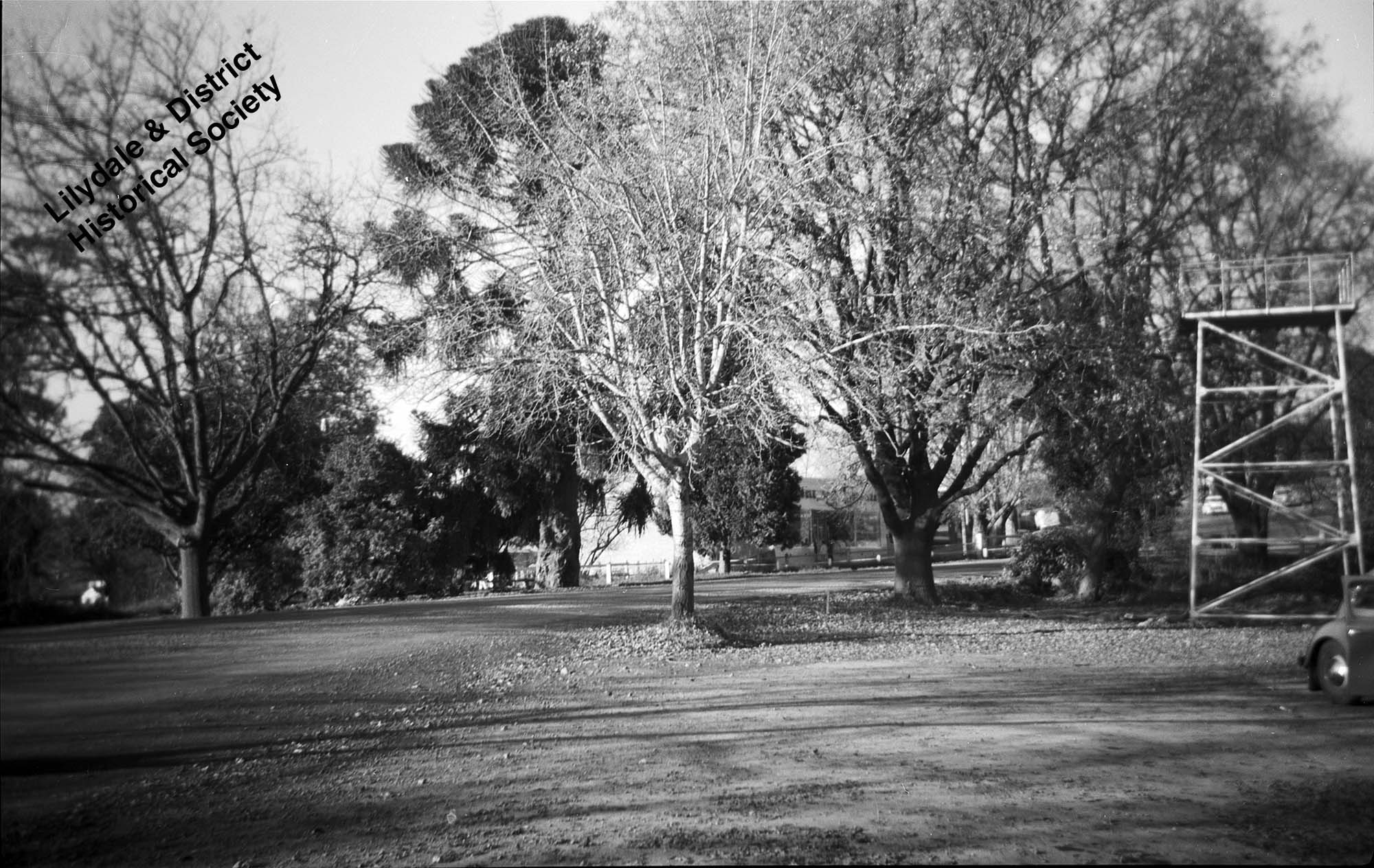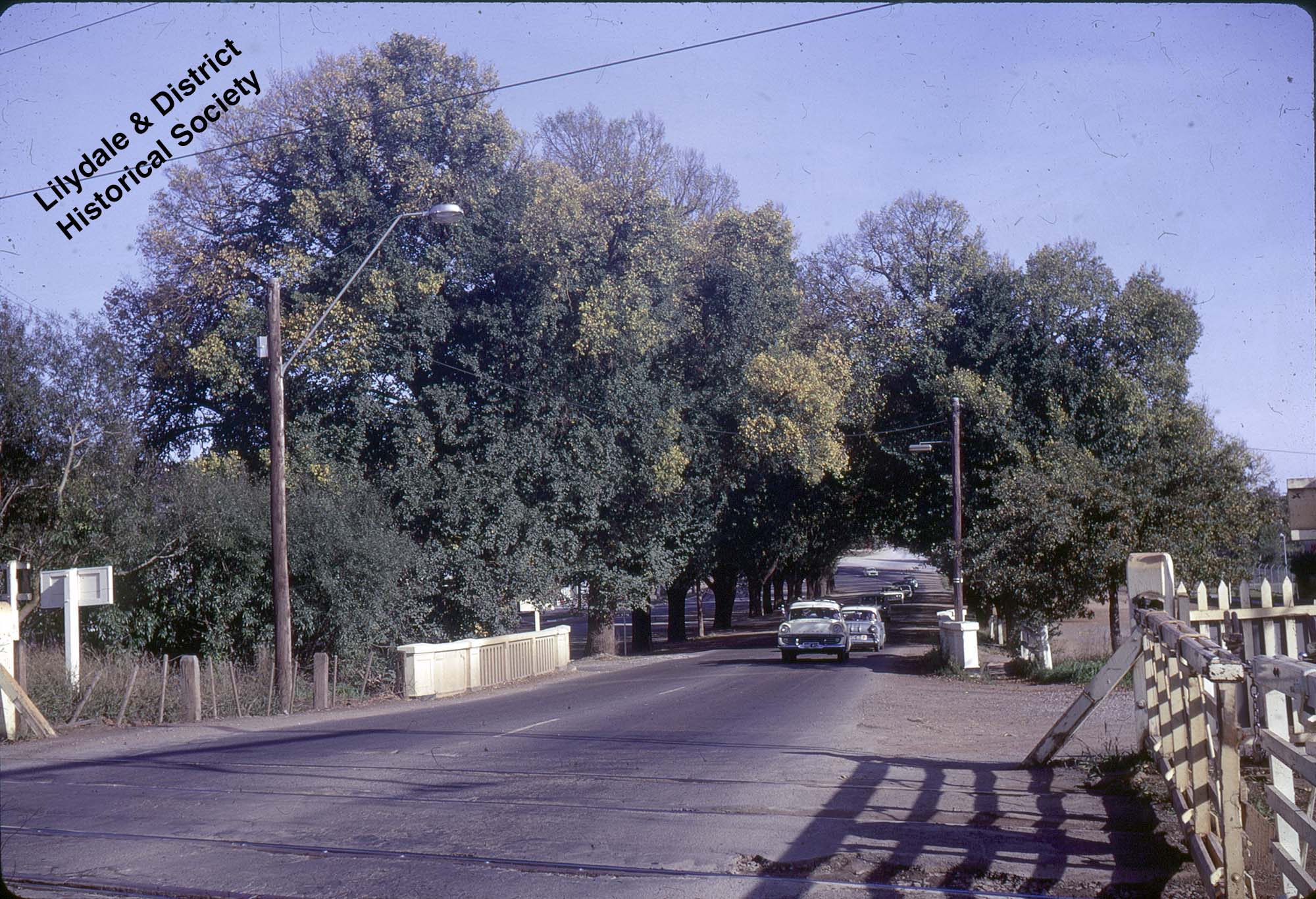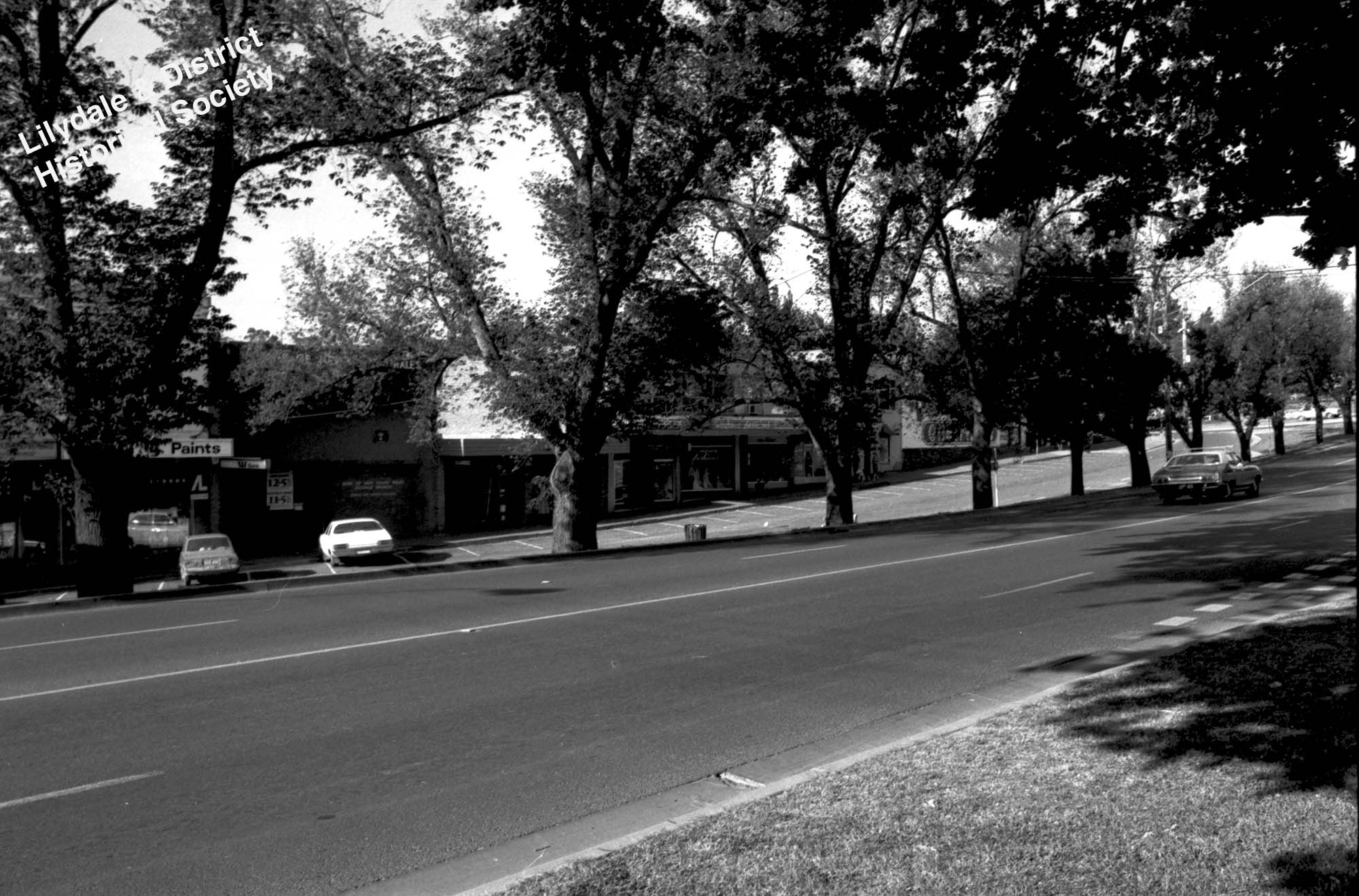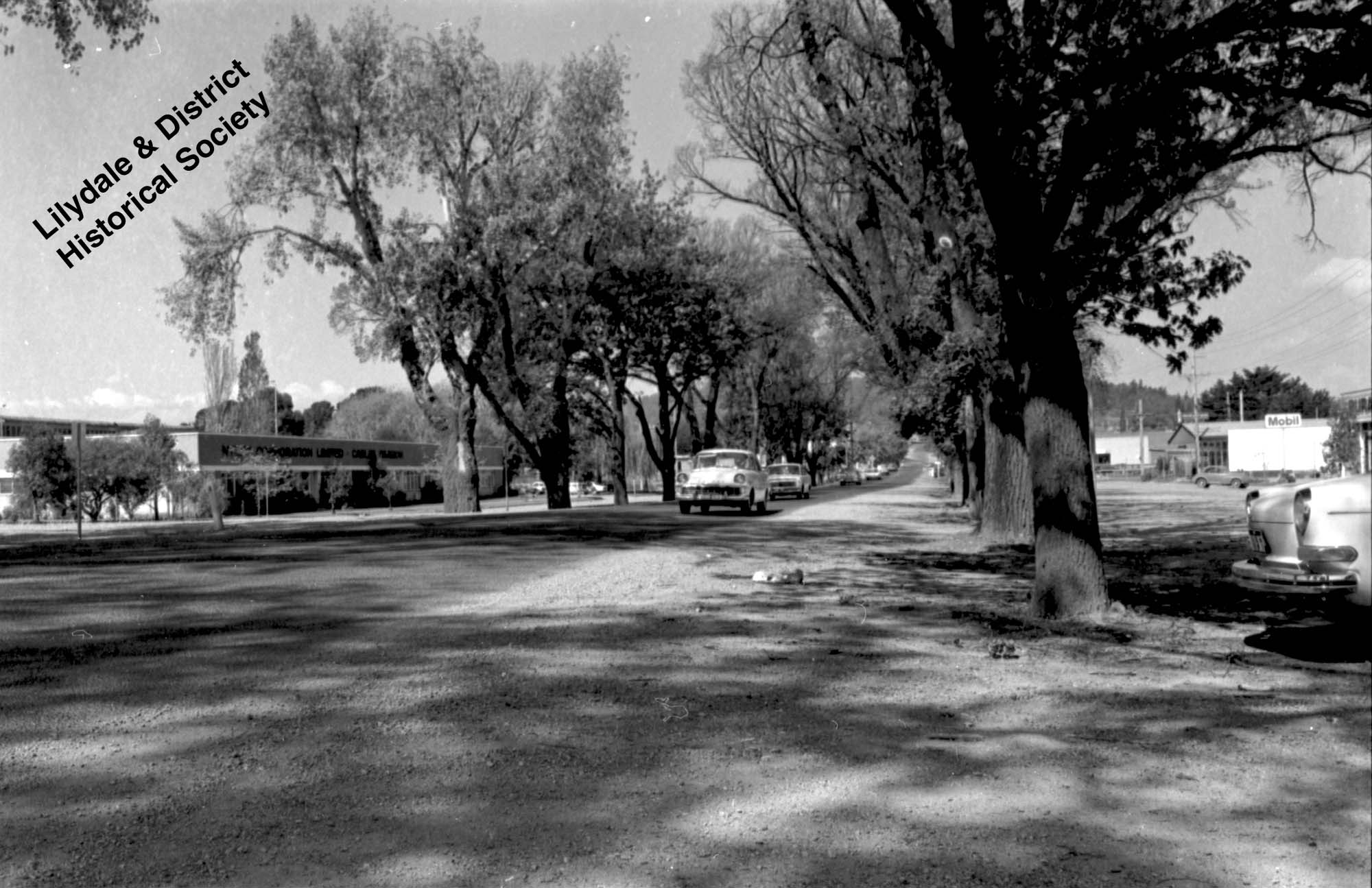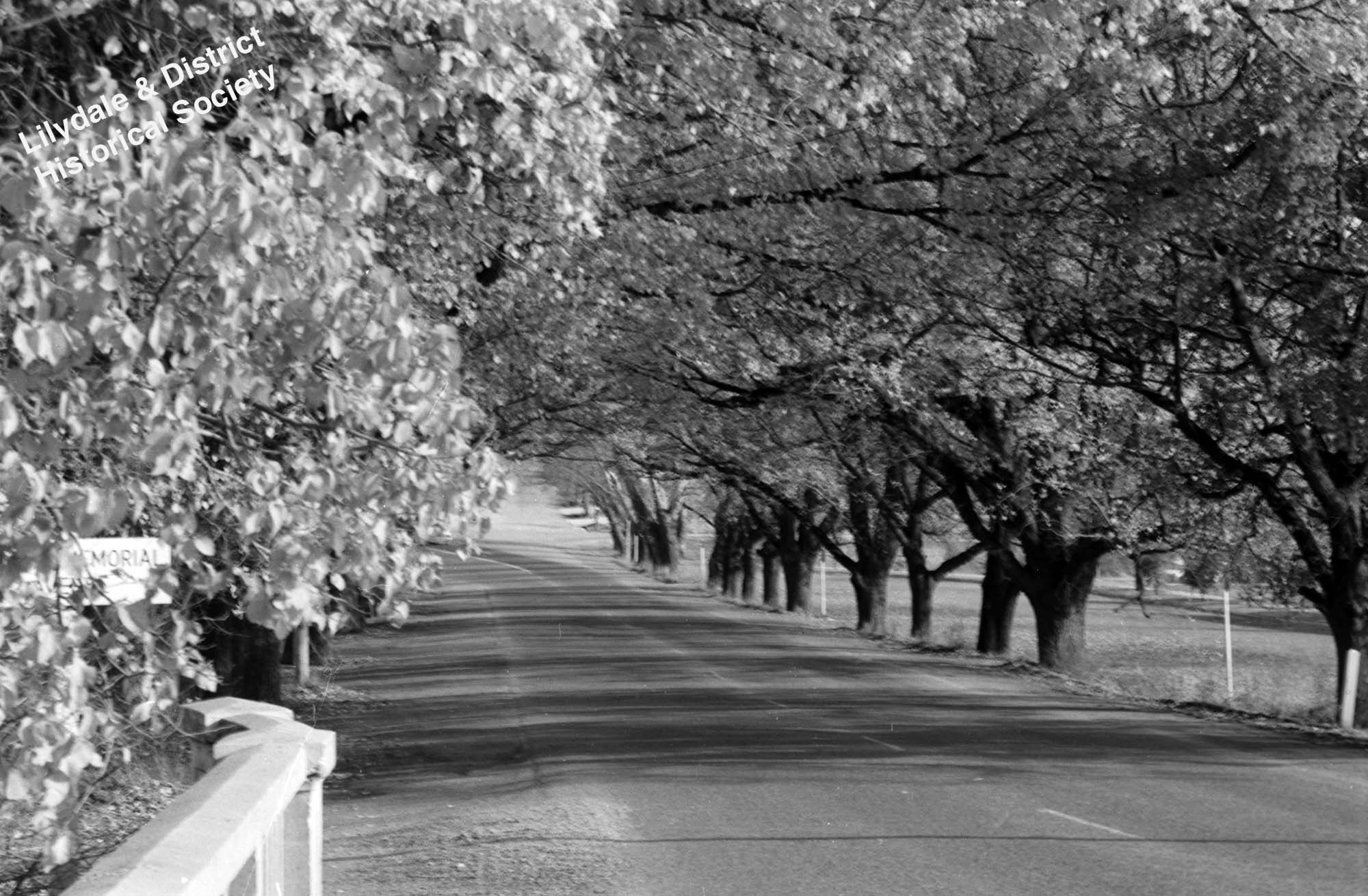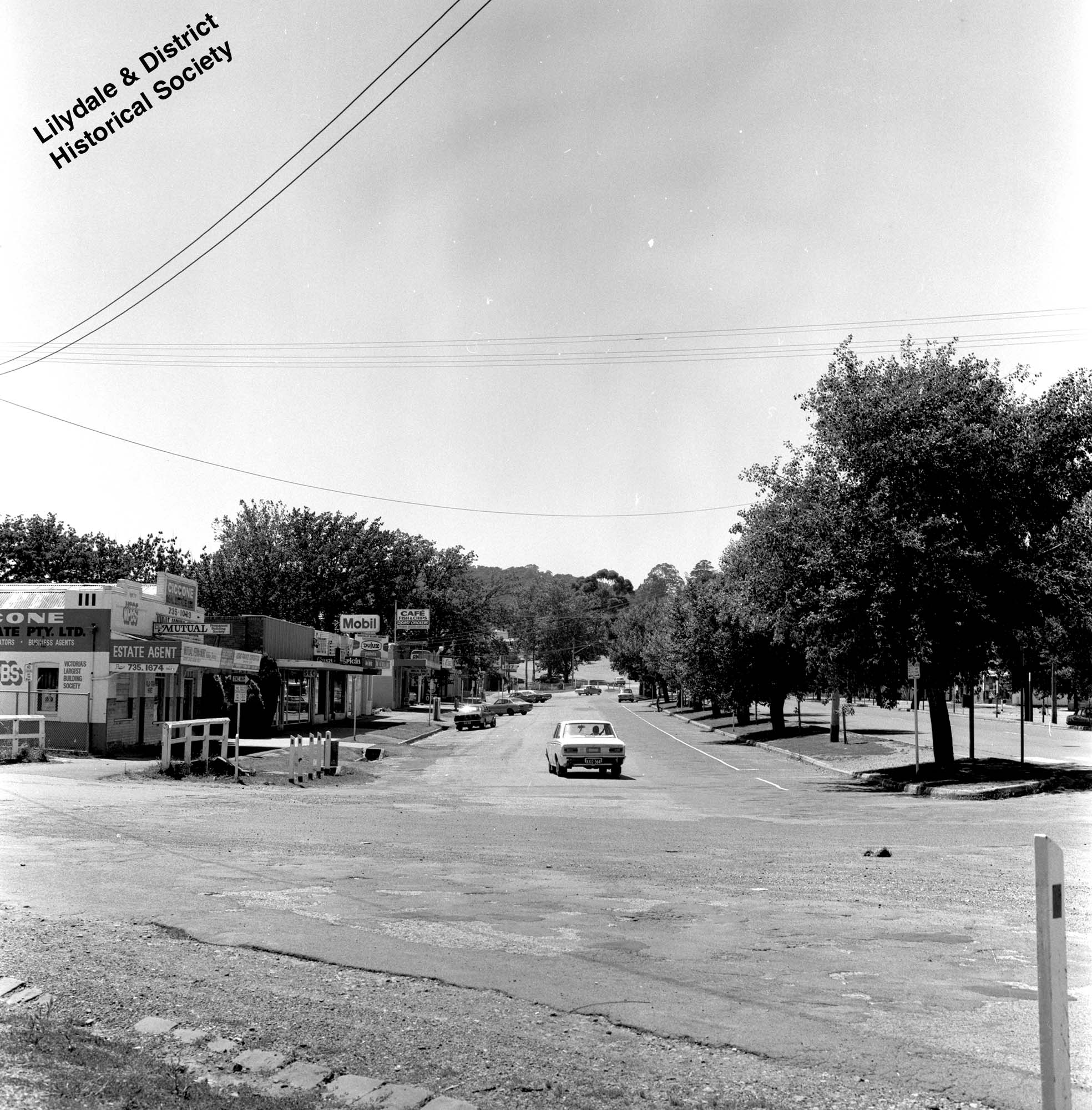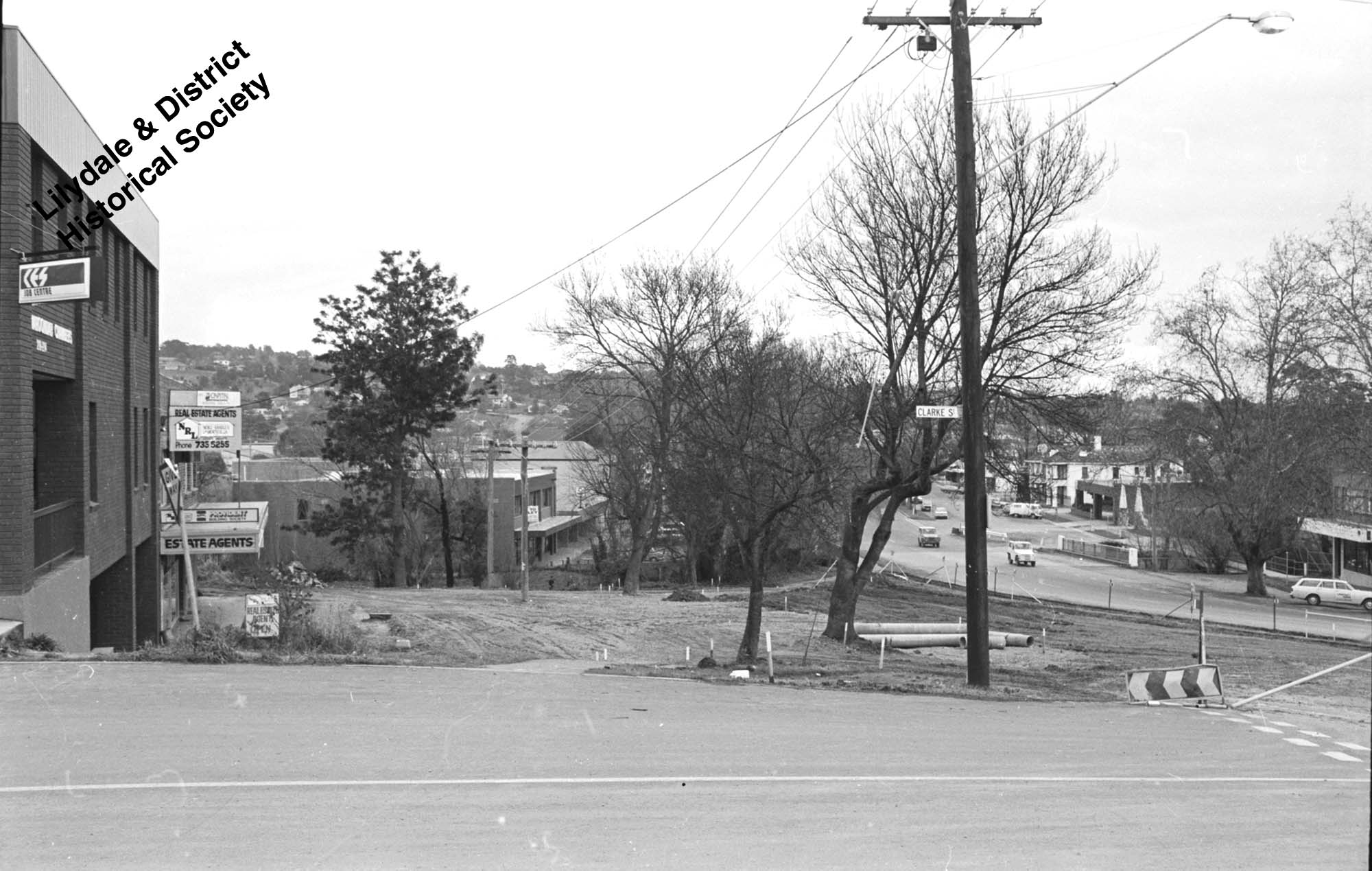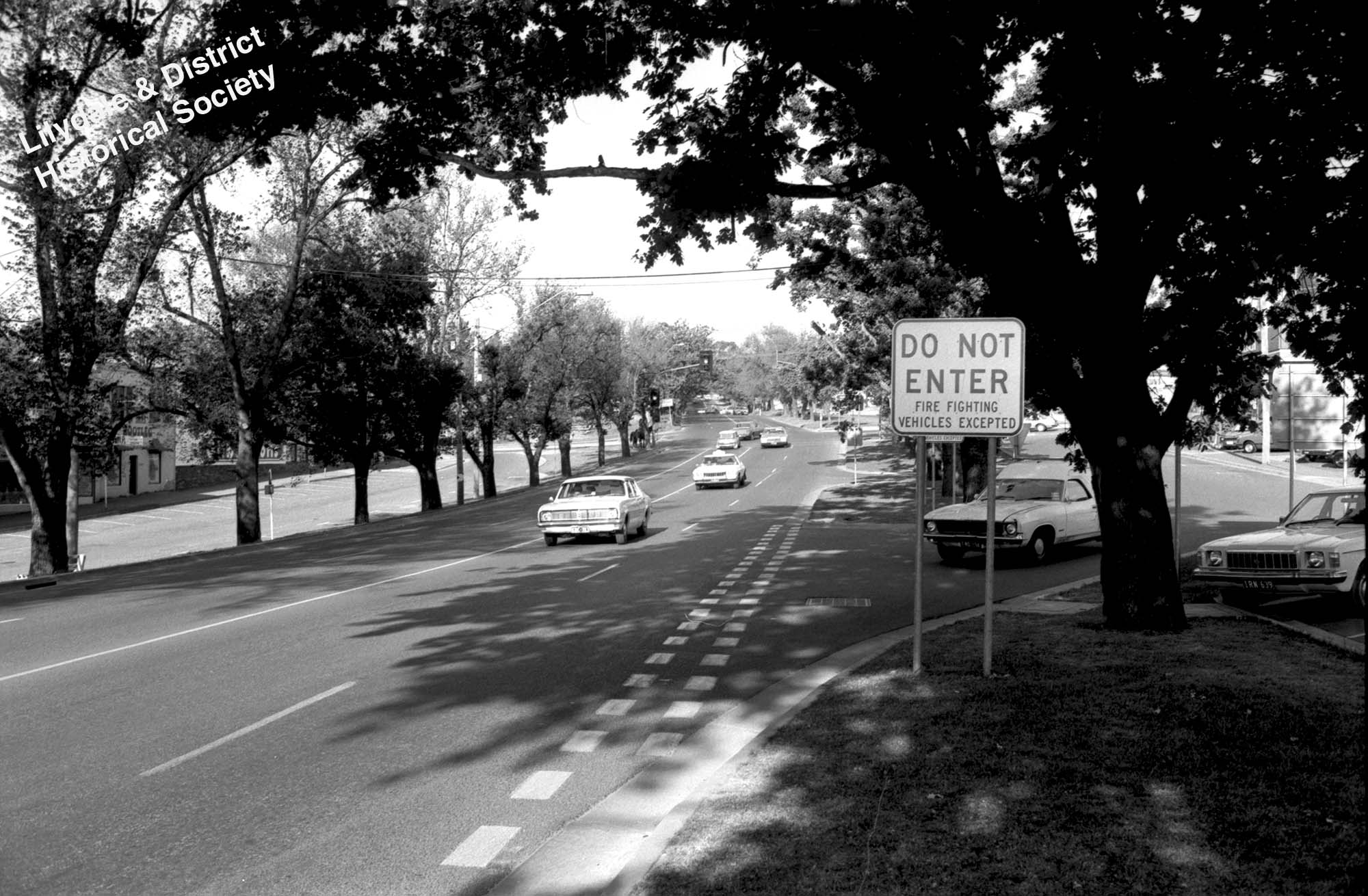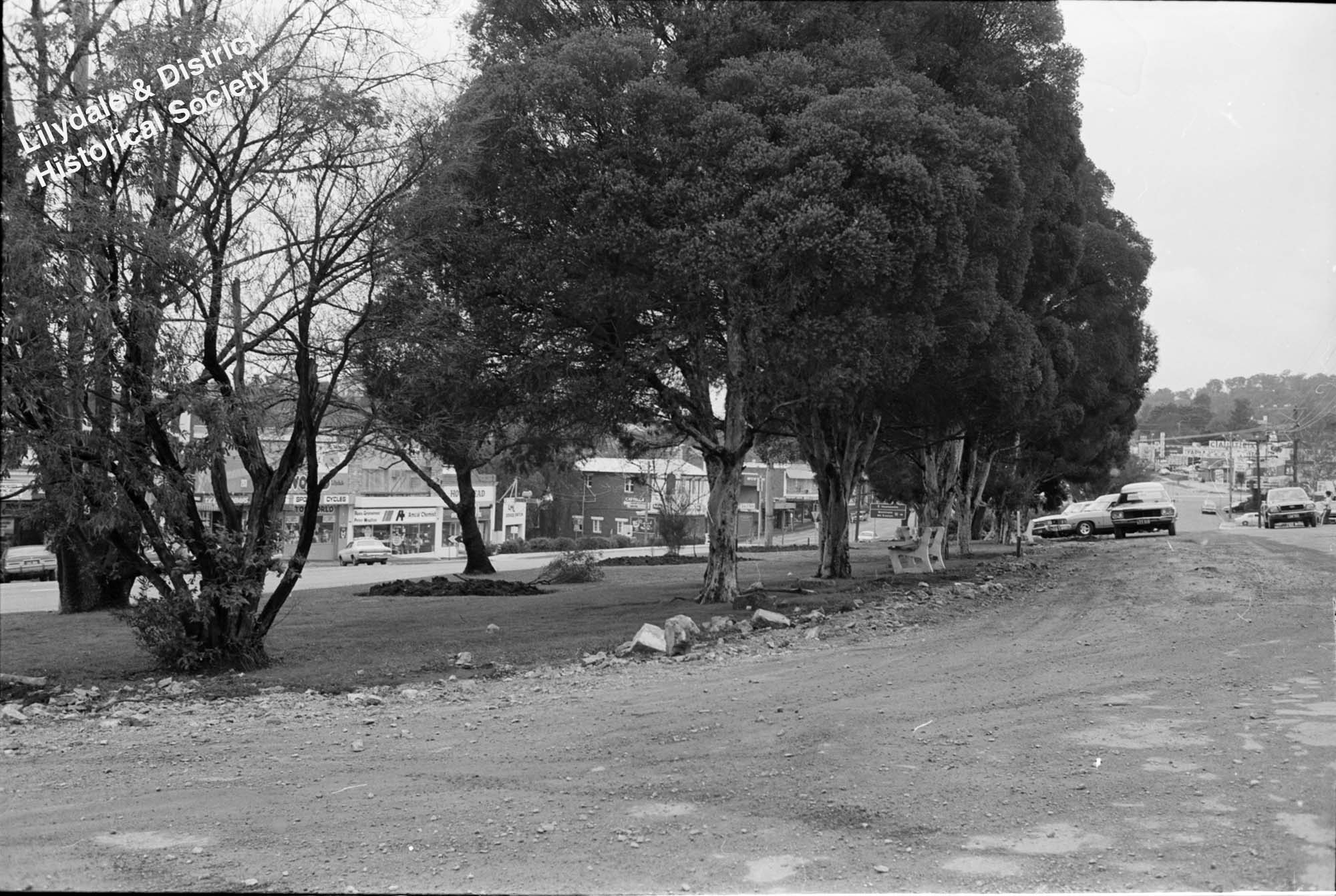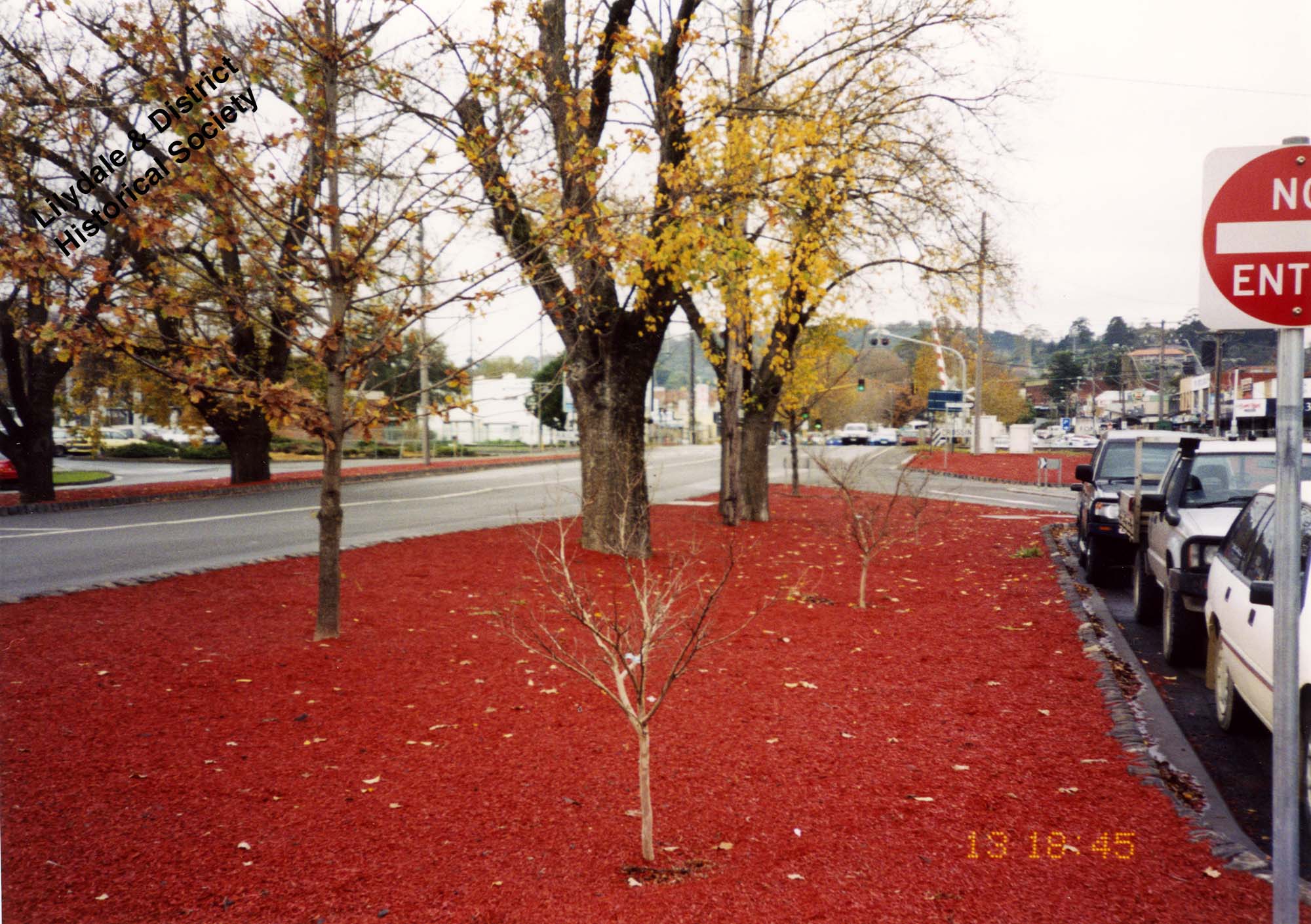
Queen’s Jubilee Avenue of Trees| Lilydale & District Historical SocietySue Thompson2020-06-25T15:53:04+11:00
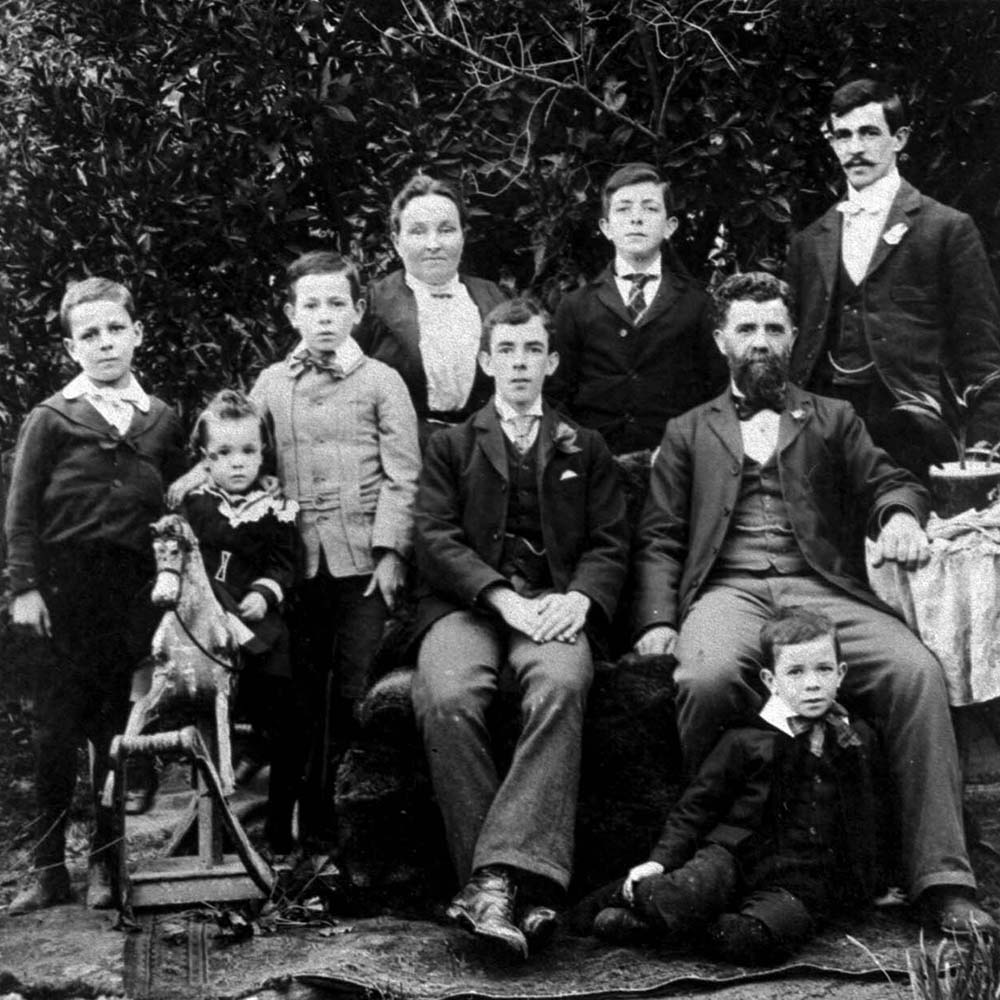
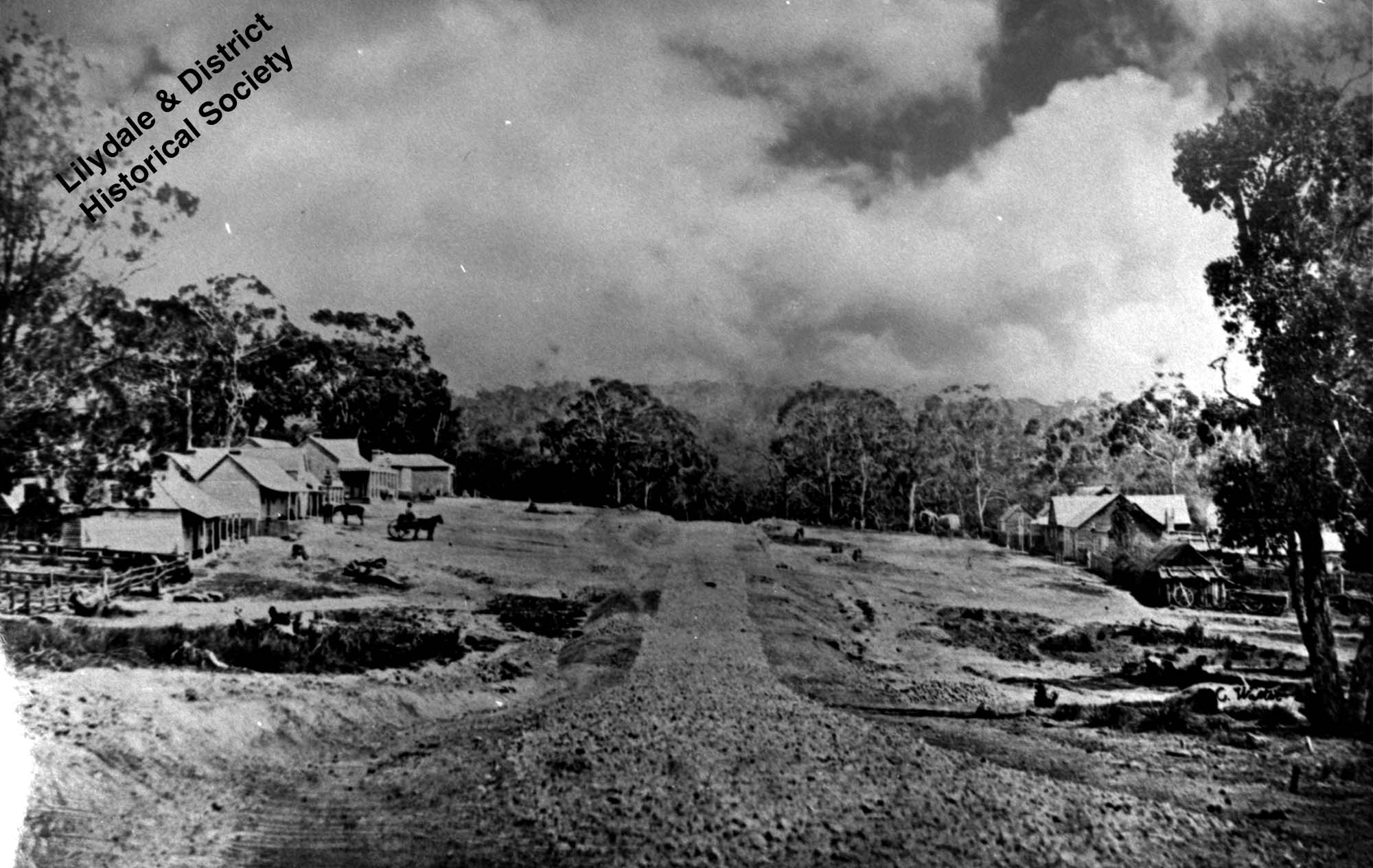
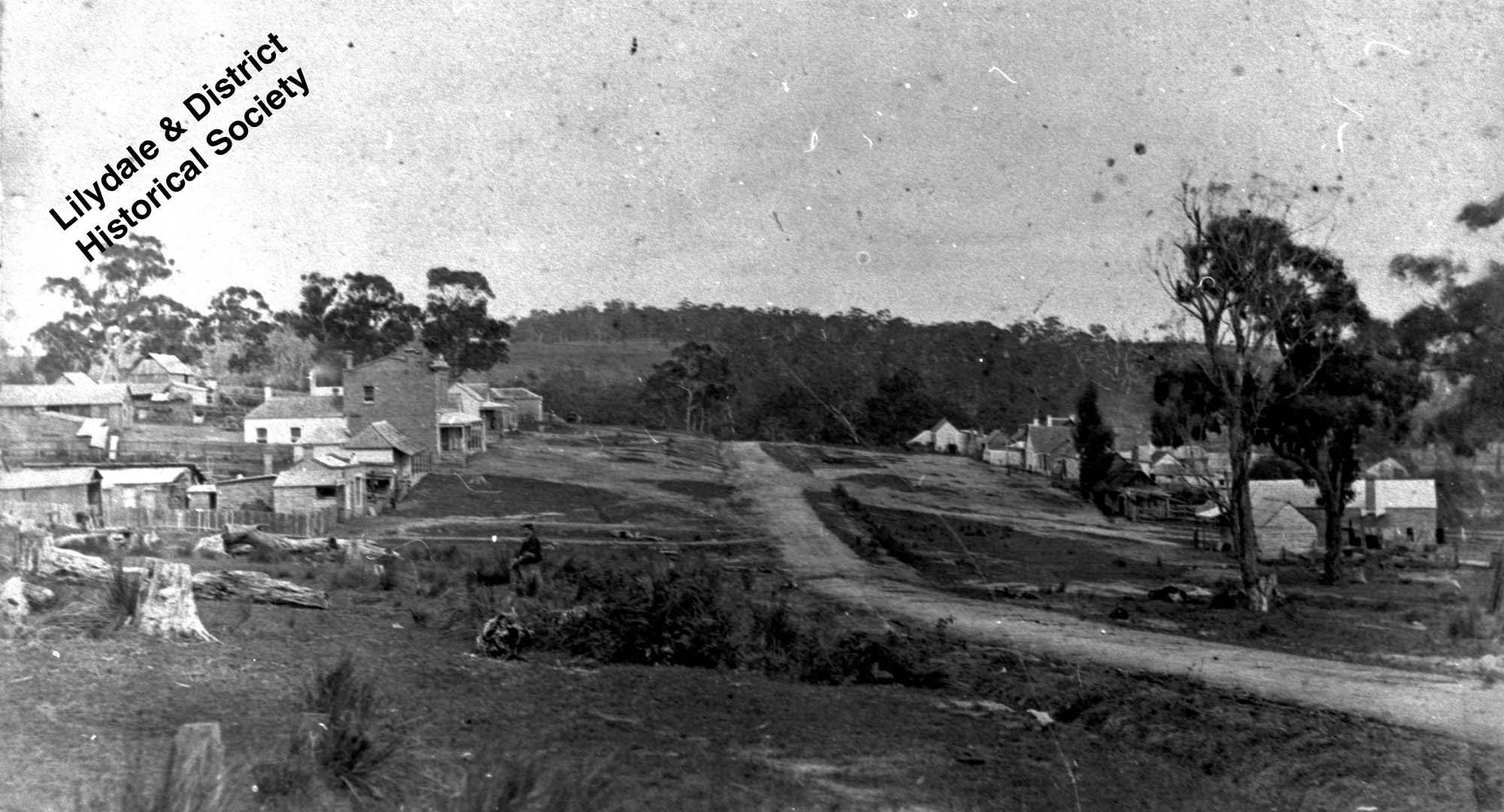
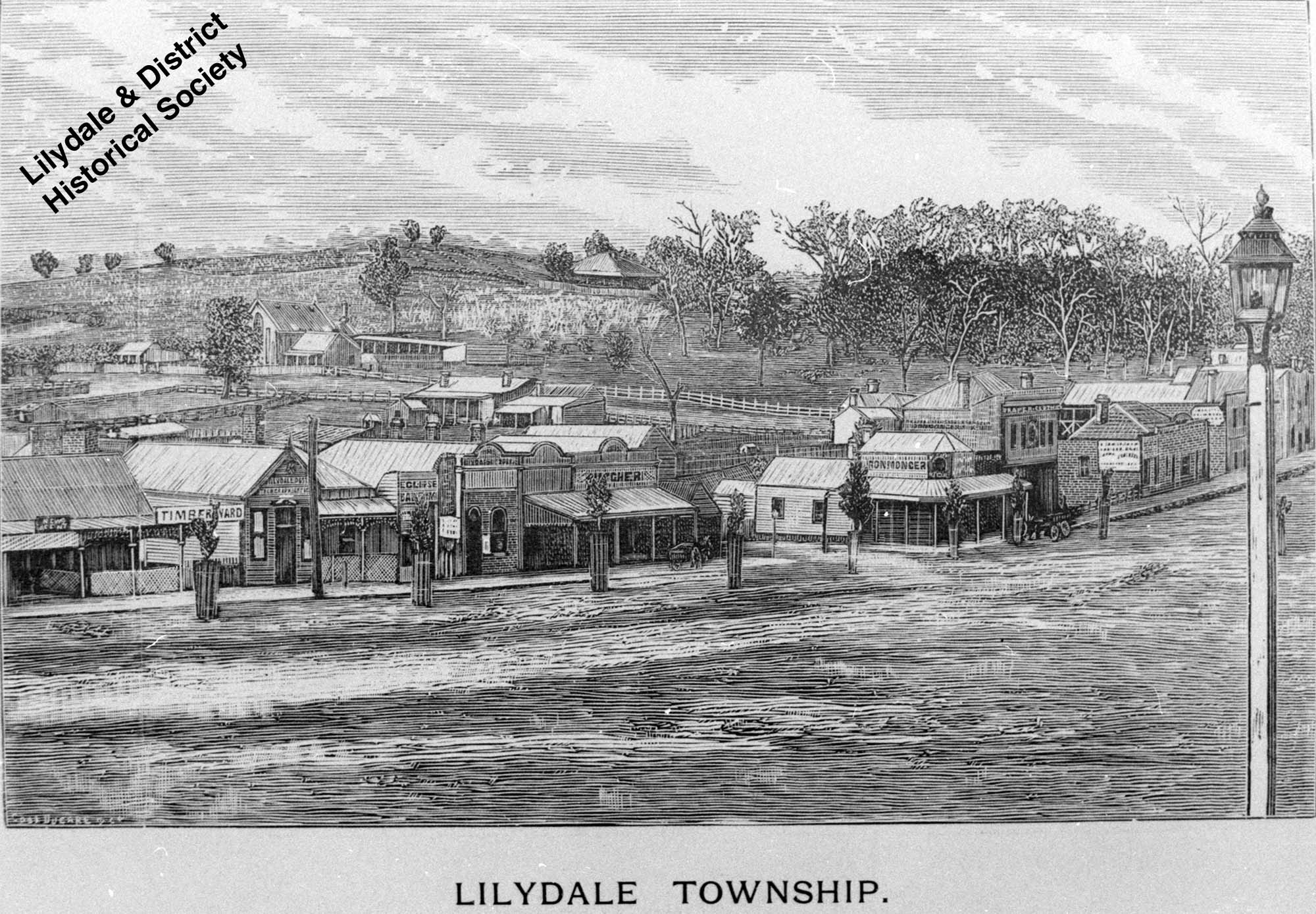

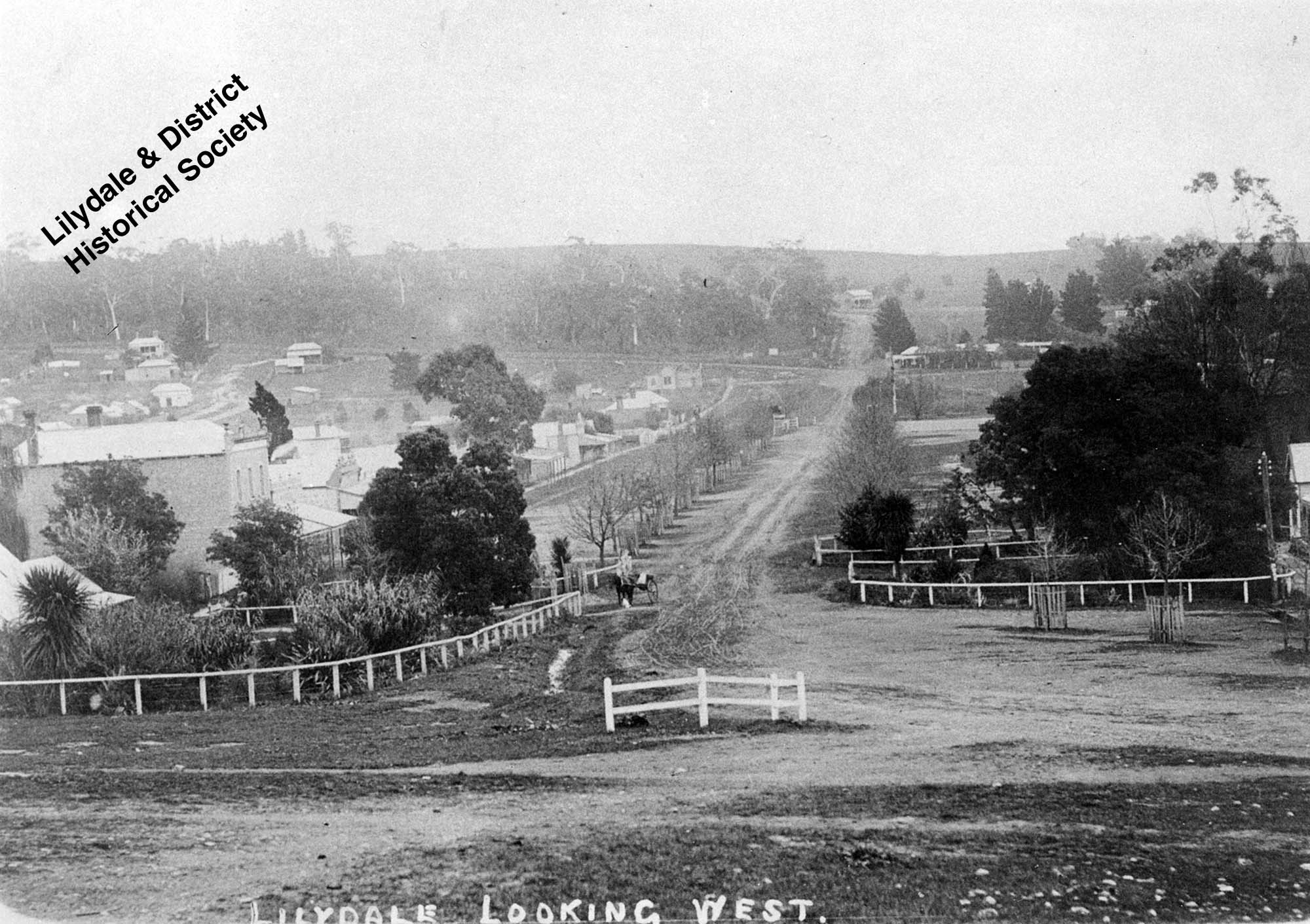
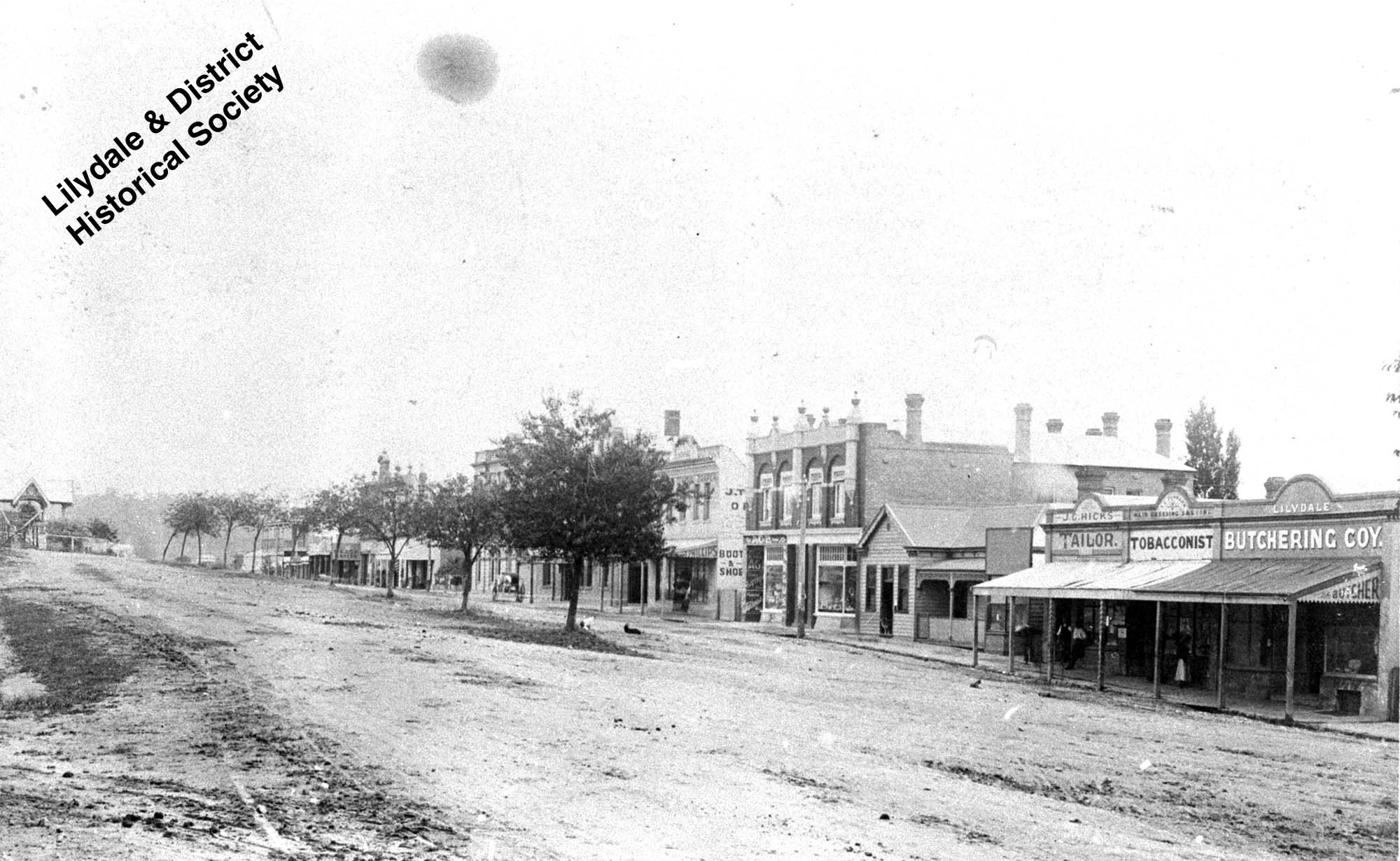
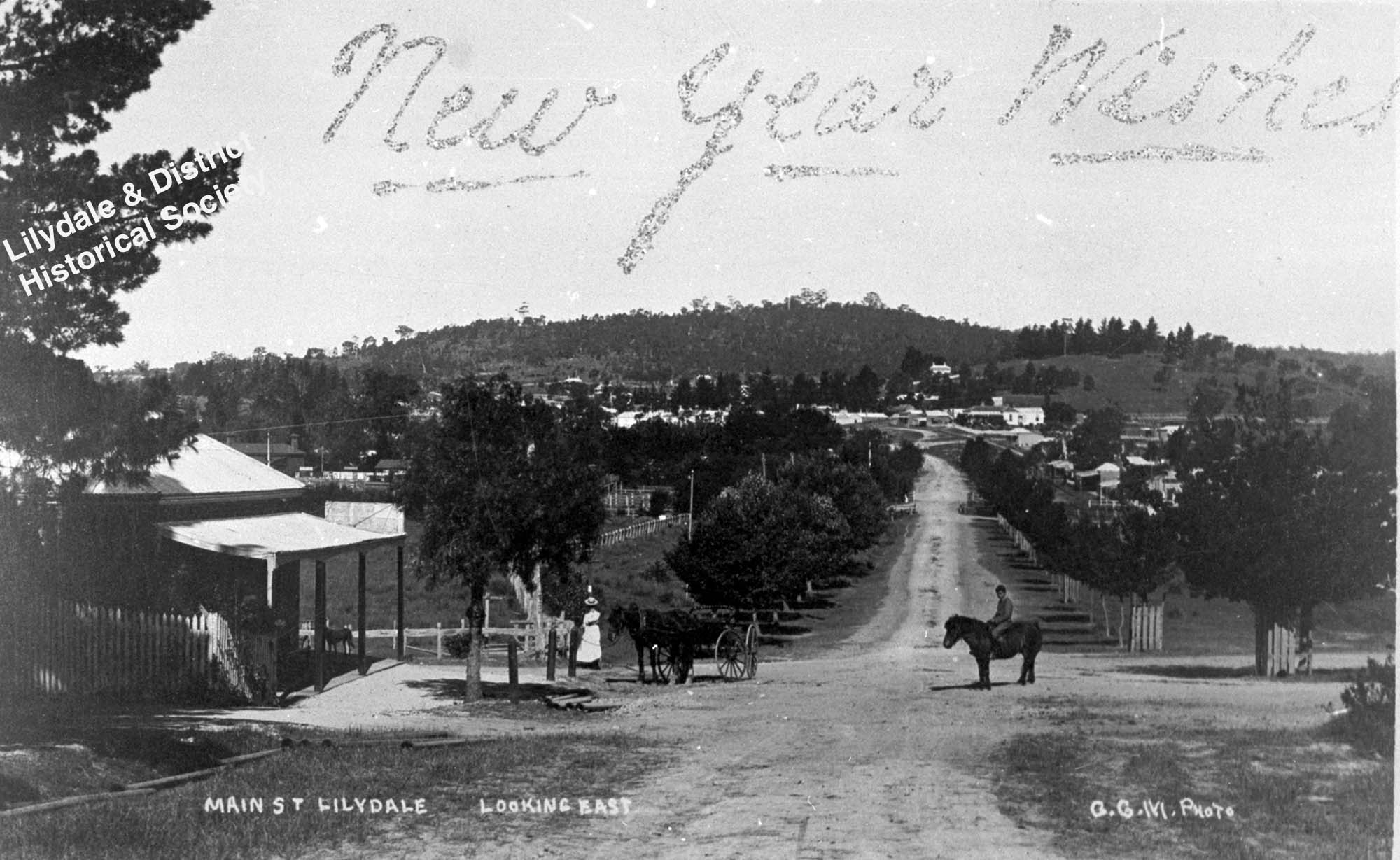
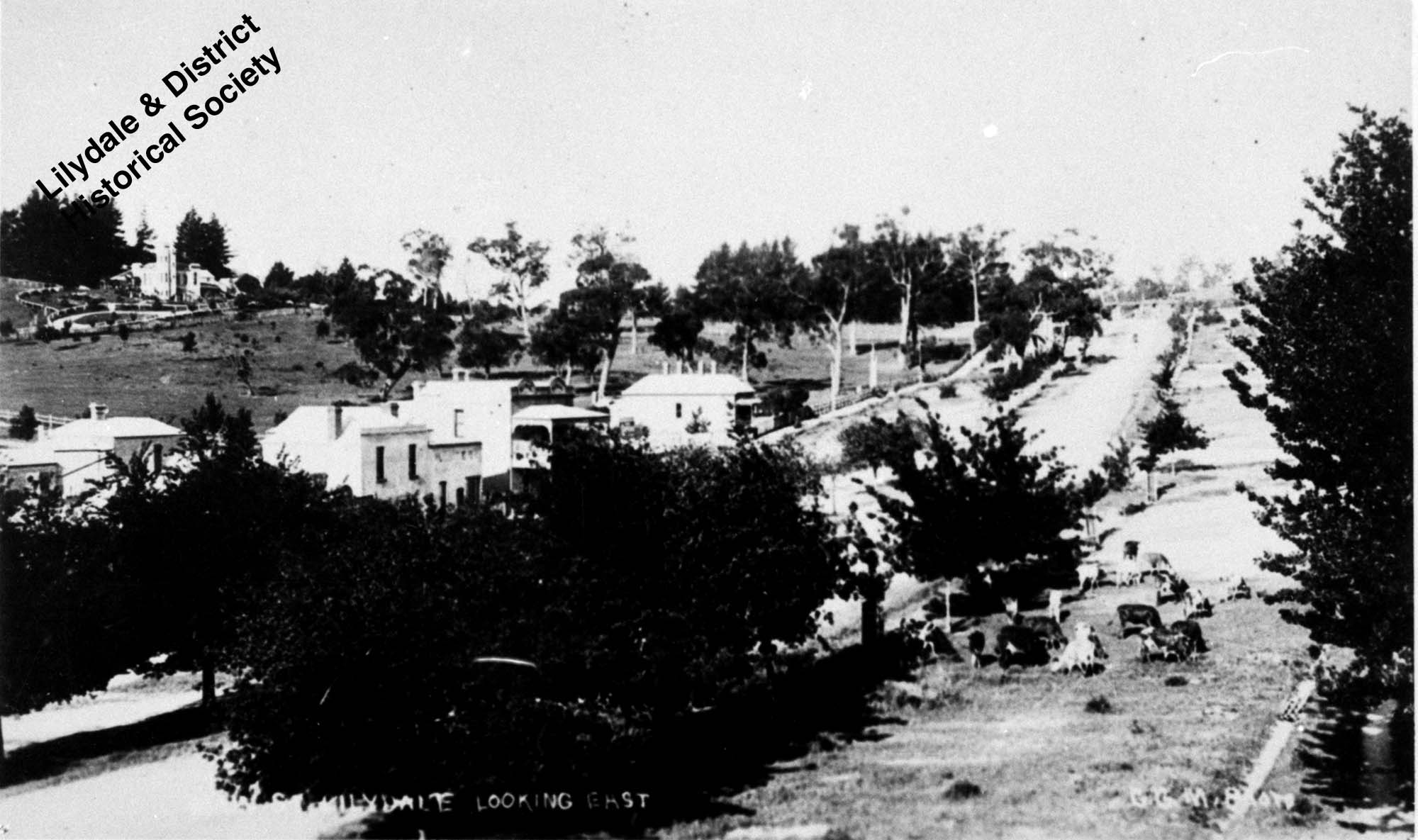
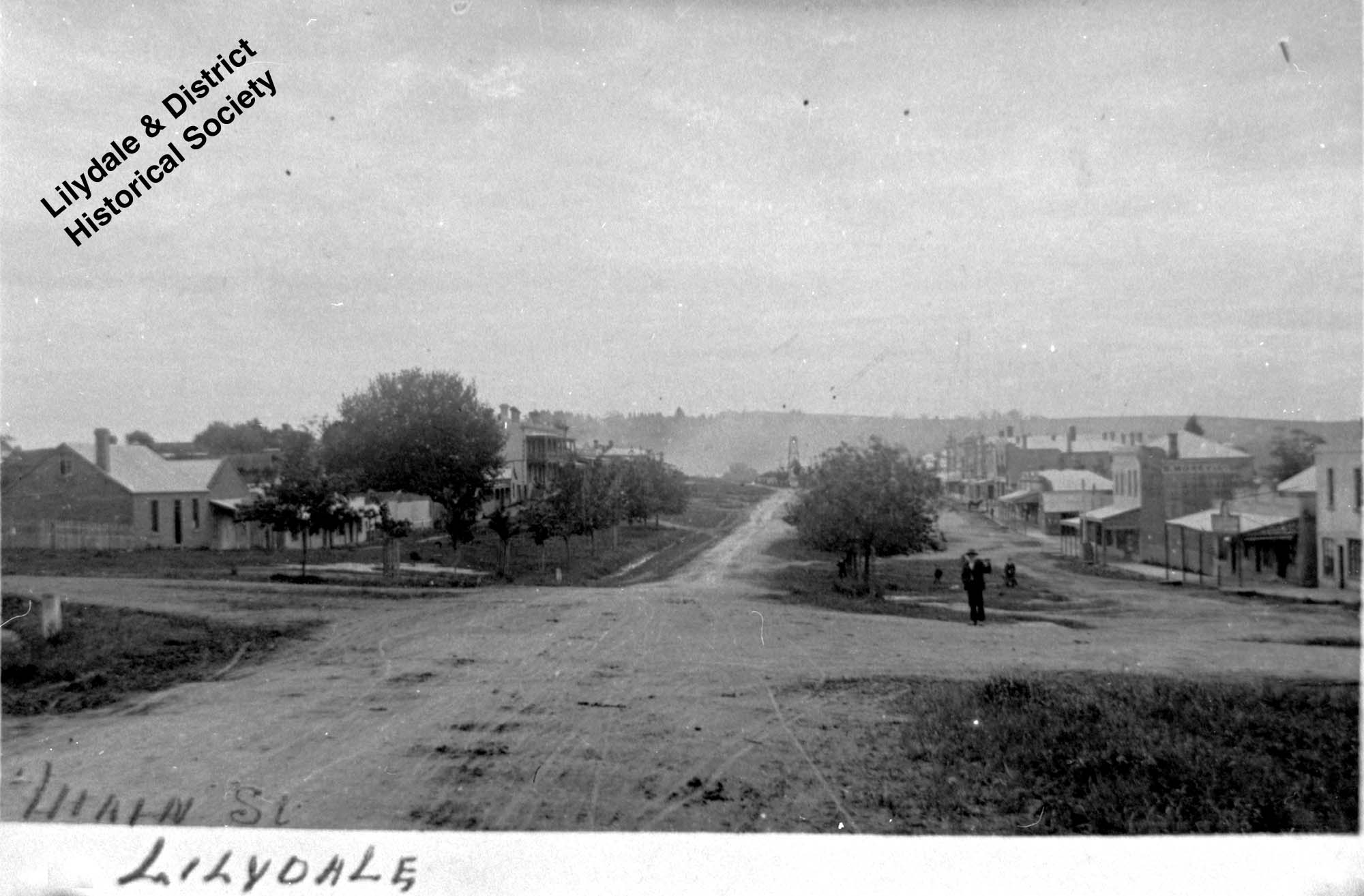


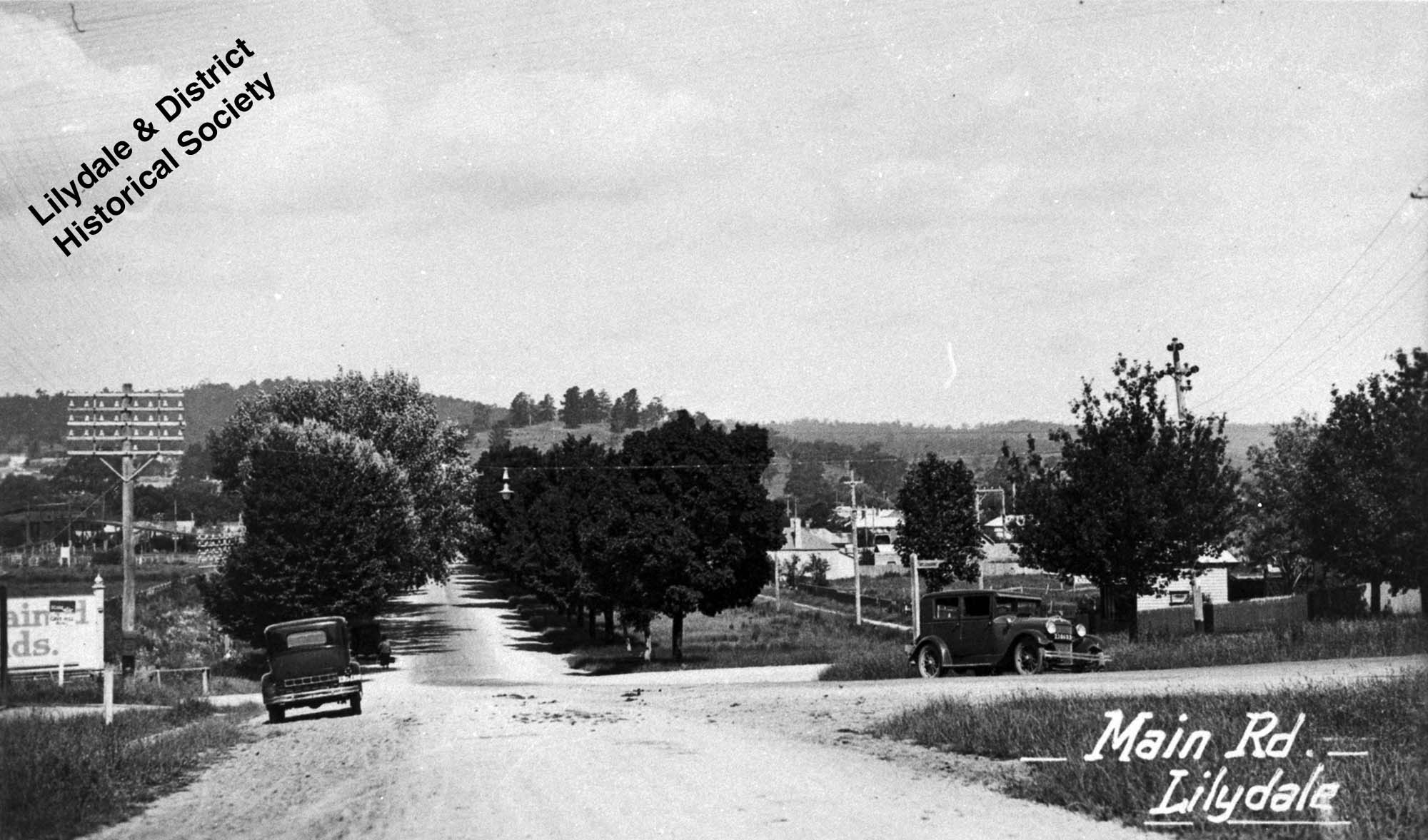

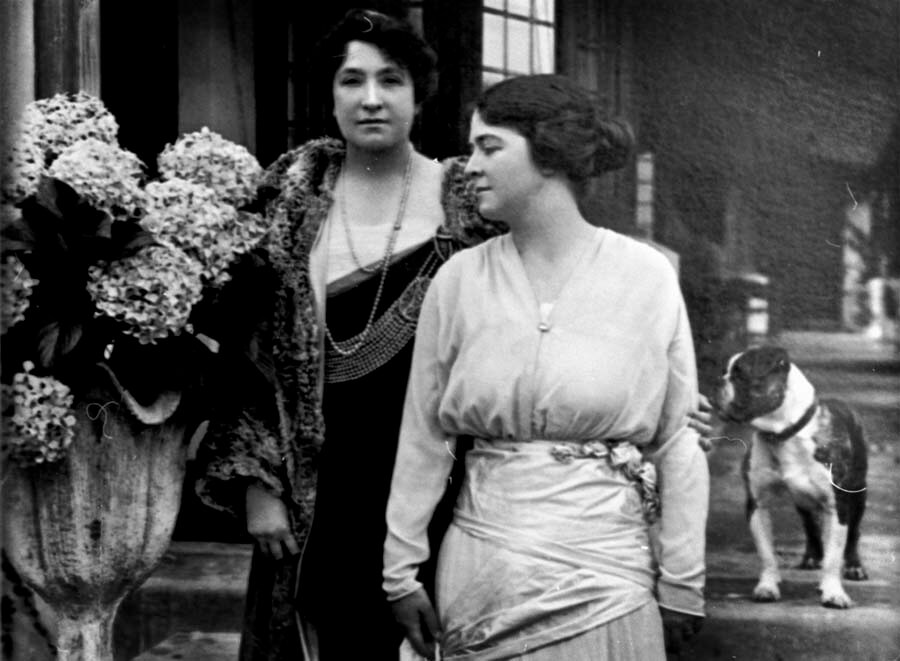
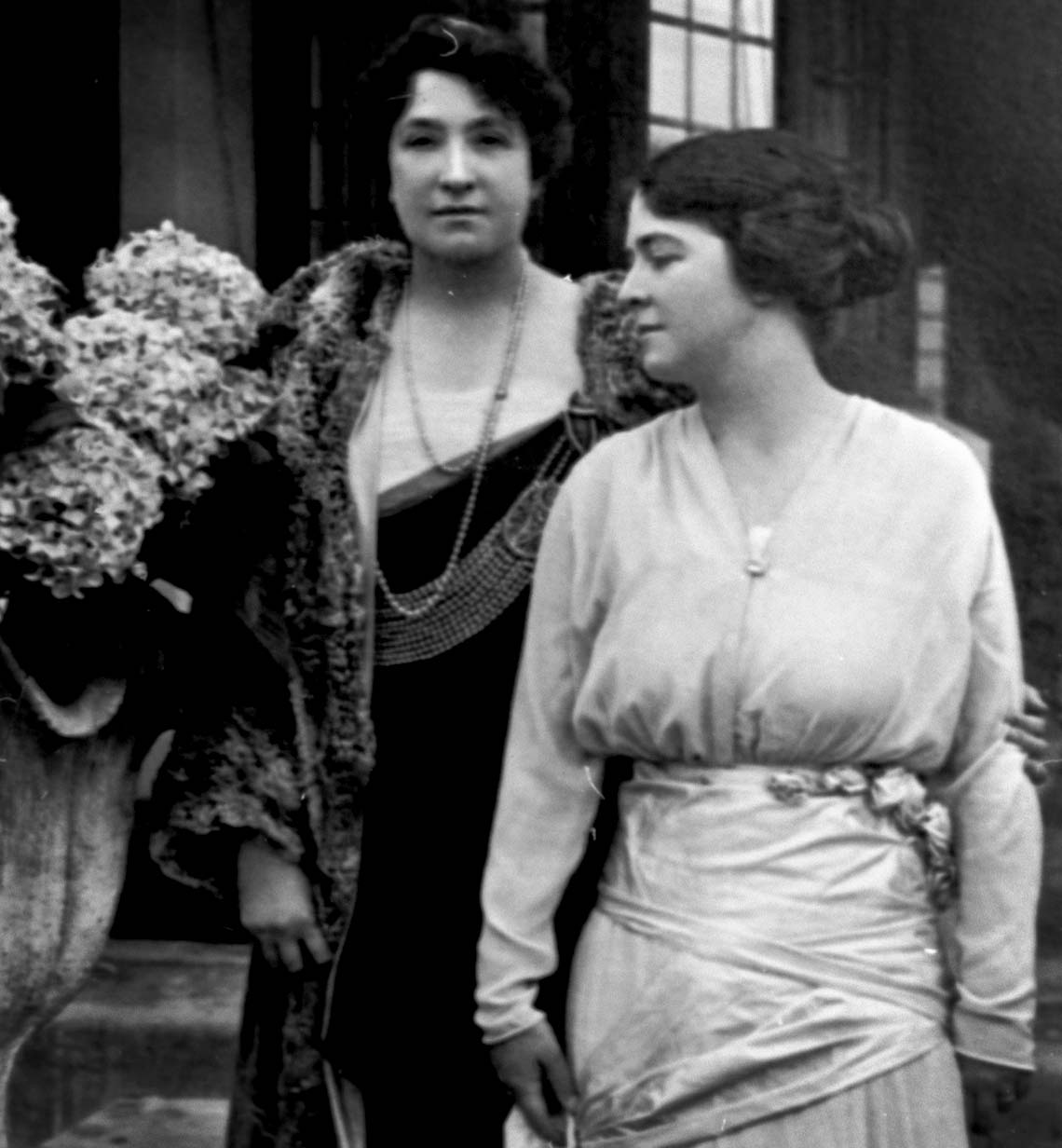

Queen’s Jubilee Avenue of Trees
Introduction
When the people of Melbourne drive into Lilydale, they are entering a township steeped in history which is the gateway to the Yarra Valley and all it has to offer.
Throughout the years, Lilydale has been remembered by generations of travellers and visitors as the town with wide, tree-lines streets. However our present streetscape was not an accident but rather a feature developed by the early settlers in the 1880s and 1890s determined to create a special place for themselves, their families, visitors and future generations.
But it hasn’t been easy protecting their legacy as people and traffic have imposed pressures on our town, our streets and out streetscapes. We hope by telling the story of our trees, today’s generations will ensure their continued survival and enhancement.
Lilydale township was surveyed and laid out in 1859 with the first land sales being held in Melbourne in May 1860. A key feature was its wide Main Street of 22 metres to carry the heavy traffic of large bullock drays and carriages heading to the goldfields at Warburton and beyond. And importantly providing space for the large drays and bullocks to turn around.

00010 Main St, Lilydale 1865. Note: Dr Elm’s House,
Lilydale Hotel and Commercial Hotel on left. In distant
left is R.T. King’s brick shop. Supple’s forge on right
(corner Castella Street) and the building with the
pitched roof behind it is the first Lilydale Post Office.

000009 Main Street, Lilydale looking west 1878.
Note the Lilydale Hotel is now the 2 storey brick building
on the left. On the right, a building is now standing
on the north east corner of Castella Street.
Faced with wide, dusty streets in summer and quagmire in winter, the founding fathers were prompted to provide two key elements to the town- shade and suppression of dust.
Today, everyone loves Lilydale’s streets during the hot summers because of the wonderful shade they give. In the era of green house emissions, our trees certainly help the planet even if in just a small way.
To date the earliest organised tree plantings in Lilydale we have found were in 1884.
“Cr David Mitchell of Cave Hill Quarry, the Lillydale Shire President, offered to provide £10 towards tree planting along Lilydale’s main road. Other councillors explored his offer but found the state nursery did not have any suitable trees so they decided to purchase elms instead. The costs of planting and purchasing the 30 trees would cost £15 so the councillors asked if they could get a shire grant for the difference. The president however, increased his donation to cover the additional amount.” (1)
“Ornamental tree-planting in Main-street was commenced yesterday.” (July 10, 1884). (2)

00021 Pen and ink drawing of Lilydale’s Main Street
looking northeast towards The Towers.
Arbor Day Committee
However, it took the Diamond Jubilee of Queen Victoria’s reign to prompt the formation of Lilydale’s Arbor Day Committee and the comprehensive annual planting of the town’s streets with large, shady trees.
1897 Queen’s Jubilee Avenue
“From first light willing hands were at work sinking holes for the reception of the trees.
Before noon the most laborious portion was completed. All along the line about 100 guards were placed in readiness. Holes had been dug and guards erected to accommodate about 80 trees.”
The trees planted were oak, elms, plane and possibly pines.
Shortly before 11am the first tree was planted at the Olinda Creek Bridge. The second was planted on the opposite side of the Road. (4)
In conclusion councillor Smith said he did not know whether to name the avenue the “Queen’s” or the “Jubilee” avenue. Councillor G.R. White suggested that it should be both and the President with much rejoicing declared the name to be “Queen’s Jubilee Avenue”.
The first trees were planted on Wednesday June 23 and the remaining trees on Wednesday June 30 due to the town’s half day Wednesday holiday. The trees were planted from the Olinda Creek to the railway line and from the railway line to Cave Hill Road. (5)
Various tree plantings of Lilydale’s Main Street over the years created the Queen’s Jubilee Avenue stretching from Cave Hill Road to the Warburton Trail bridge east of the township.
In 1898 trees were planted on Wednesday June 15. The first tree planted a chestnut at the Supple’s Blacksmith corner and second at B. Morey & Co’s corner (both Castella and Main streets). A total of 53 holes were dug. Mr Janson inspected last year’s trees and found few had failed to survive and these were replaced. (6)
In 1900 Lilydale’s Arbor Day celebrated the Relief of Mafeking with the planting of an oak the Exegit monumentum aerc perennius. This was followed by 50 holes sunk in Castella Street from the Lilydale Express to the Church of England (ie Chapel to Jones streets) The trees planted were oaks and elms. (7)
In 1901, the Arbor Day Committee decided that tree planting, which will be continued in Clarke Street, will commence at 8am.(8)
In 1902, 50 oak trees were planted in Cave Hill Road. The seventh annual arbor day was held at Lilydale on Wednesday. Trees are now planted in all the town’s principle streets.(9)
In 1903, the seventh anniversary of Arbor Day was celebrated on Wednesday last. Three trees were planted and guards erect in Main street opposite the business places of Mrs Tait and Mr Hamblin (just east of the Olinda Creek on the south side).
Twenty guards were removed by Mr Janson from the west side of the railway in Main Street to Anderson Street, near the Convent, where Mr L. Flannagan planted a like number of trees and re-erected the guards (plane trees that are currently there).” (10)

00143 Hunt Club turning into Cave Hill
Road, Lilydale from Main Street, 1903.

01826 Looking west down Main Street, Lilydale
from centre garden and war memorial. 1903
In 1905 the eastern end of Main Street was planted. On this occasion 53 trees, elms and oaks alternately, were planted, on either side of the Main Street, from Dr Syme’s residence(near Corner of Anderson Street) to the Warburton railway bridge.
Mr M’Comb gratuitously indicated the positions of the trees by the aid of his theodolite.
This happened on July 13, 1905 on the morning of the day the fountain in the Fountain Oval in Main Street, was turned on by David Mitchell. (11)
A report from the meeting of the Lillydale Council covered tree planting by the Arbor Day Committee:
“A letter was received from the Lilydale Arbor Day Committee stating that it had been decided to do the annual work on July 5, and suggesting that a double row of trees be planted in Main Street from Deschamps Avenue to the railway bridge, subject to the approval of the council and the residents of that part of town, and on the condition that the council form two side roads between the line of trees. Cr Warrington moved that the council agree to the planting of one row of scarlet flowering gums on the north side of the street, and that no planting be done on the south side. The motion was carried.” (12)

01823 Looking west from Castella Street at the shops and s
treet trees on the north side in 1906.
Visible shops are Lilydale Butchering, tabacconist, Hicks Tailor,
the small shop, Perrin’s post ofice, Beresford shops, J.T. Phillips store.

01819 Looking east along Lilydale Main Street to the town. 1906.
The Lilydale Express in 1908 summed the movement up well claiming its Arbor Day replaced Empire Day in other towns:
Arbor Day has long since become an annual fete day in Lilydale and the 12th celebration on Wednesday was but another evidence of the enthusiastic and energetic manner in which our local residents apply themselves to the beautification and improvement of the streets of the town. Other contiguous towns annually celebrate Empire Day and other such festivities, but in Lilydale Arbor Day has been a settled institution… (13)

00101 Lilydale looking East from the Lilydale Hotel, 1908.

00161 Main Street, Lilydale looking west from Anderson Street. ca 1911.
0n June 22, 1911, the town organised special celebrations of the coronation of George V which included united church service in the Athenaeum Hall, a procession, tree planting,flag unfurling ceremony, sports day and fireworks.
“The scheme as roughly outlined is that a row of trees be planted on the north side of the Main street from Anderson street to the railway bridge.” (14)
“On arrival at the railway bridge the school children planted a row of trees on the north side.” (15)
Arbor Day in Lilydale quickly became a major family event on the town’s calendar. It was held on a Wednesday and was a public holiday for the town. In the morning the men worked hard completing the planned projects – town improvements and tree plantings while the ladies provide the refreshments. In the evening, after a hard day’s work, the children staged a juvenile concert in the Athenaeum Hall.

03292 Main Street, Lilydale looking west from the first bridge
across the Olinda Creek. The two bridges and the Queen’s
Avenue of trees is visible. Rose Series P. 1050 copyright.
The road to the station, Lilydale, Victoria.

06917 Taken from around Olinda Creek looking west,
the Lilydale Brass Band is leading a long parade marching eastward
as part of the town’s Peace Day parade July 25, 1919.
The picket fence in the background is the Lilydale Railway Station.
Arbor Days continued in Lilydale throughout the World War I years but after the 1920 events, the celebrations stopped.

00064 Taken just west of the Albert Hill Road, Cave Hill Road and Main
Street intersection looking east to Lilydale’s Main Street.
The Queen’s Jubilee Avenue of Trees is in the centre.

00517 Floods Main Street 1934.Lilydale railway line is in
the distance behind the white picket fence.
Edward Armstrong Janson
Janson first appears in the shire of Lillydale ratebooks of 1894 as the owner of The Towers. After his arrival he became involved in most aspects of life in the township as the Lilydale Express obituary recorded:
“It was soon after his arrival in Lilydale that he gave his attention to the town’s civic requirements, and it was not long after being elected a shire councillor that he achieved his greatest ambition, that of organising a tree planting scheme in our many streets.
“He succeeded also in establishing a yearly Arbor Day, and for many years after that, when he was alloted the name “skipper”, he supervised tree planting ceremonies, thus helping to bring about the most gratifying present day sight of beautiful tree-lined streets, which have made Lilydale famous.” (16)
Janson was heavily involved with the Lilydale Horticultural Society and it was that group which suggested the shire name an avenue of trees in his honour. Their request met with approval:
“Janson Memorial Approved
Lilydale Horticultural Society’s proposal that the avenue of trees along Maroondah Highway from the railway gates to Cave Hill road be named “The Janson Memorial Avenue” has been approved by the Country Roads Board. Council which recommended adoption of the proposal, will now have appropriate name-plates erected at each end of the avenue” (17)
The sign was erected in 1955 and was still there in 1969 but has since disappeared.
In 2007 and again in 2009, the Lilydale & District Historical Society has gained council support for a new sign but it has never been erected. (18)
As living things trees reach the end of their lives and have to be replaced. Over the years, the society has worked with the council to grow replacement trees when needed and ensure appropriate trees are planted when replacing dead or diseased trees throughout the town.
Below are images from throughout the years of Lilydale’s Main Street and its changes.
Link to see larger versions of the image go to our Lilydale Views gallery.
If you want to know when the trees in your street were planted, please order a copy of our book:
The Growing History of Lilydale’s Trees compiled by Sandy Ross.
Go to our order form. The cost is $5.00 plus postage.
Researchers were: John Brown (Landscape Architect) and Sue Thompson
References
1. The Argus May 27, 1884 pg 6.
2. Evelyn Observer July 11, 1884 pg 3.
3. Lilydale Express June 6, 1898.
4. Lilydale Express June 25, 1897.
5. Lilydale Express June 25, 1897 pg2.
6. Lilydale Express June 17, 1898 pg2.
7. The Age June 14, 1900 pg 6 and Lilydale Express June 15, 1900 pg2.
8. Lilydale Express June 14, 1901 pg 2.
9. Box Hill Reporter July 18, 1902 pg2.
10. Lilydale Express July 24, 1903 pg2.
11. Healesville and Yarra Glen Guardian, July 22,1905 p2.
12. Box Hill Reporter May 26, 1911 pg2.
13. Lilydale Express July 17, 1908 pg 2.
14. Lilydale Express June 10, 1911 pg2.
15. Lilydale Express June 30, 1911 pg3.
16. Lilydale Express November 13, 1953 pg 8.
17. Lilydale Express September 2, 1955 pg 8.
18. Letter from Sandy Ross to Rob Hauser CEO August 16, 2007 and Yarra Ranges’ Greg Box to Mrs Jeanette Gow October 19, 2009.

Lilydale & District Historical Society Inc.
Contacts:
Maria McCarthy (President) 9739 7407
Email: [email protected]
Our home is the Old Lilydale Court House at 61 Castella Street, Lilydale 3140
Hours of opening:
By appointment only:
Fridays 1 to 4pm and Saturdays to Mondays 11am to 4pm.
Sundays are preferred.
Closed Public Holidays
Share Your Information with the Society!
Email us your info (and images) to:
[email protected]
Lilydale & District Historical Society Inc.
Contacts:
Maria McCarthy (President) 9739 7407
Email: [email protected]

Share Your Information with the Society!
Email us your info (and images) to:
[email protected]
Our home is the Old Lilydale Court House @
61 Castella Street, Lilydale 3140
Hours of opening:
By appointment only:
Fridays 1 to 4pm and Saturdays to Mondays 11am to 4pm.
Sundays are preferred.
Closed Public Holidays

